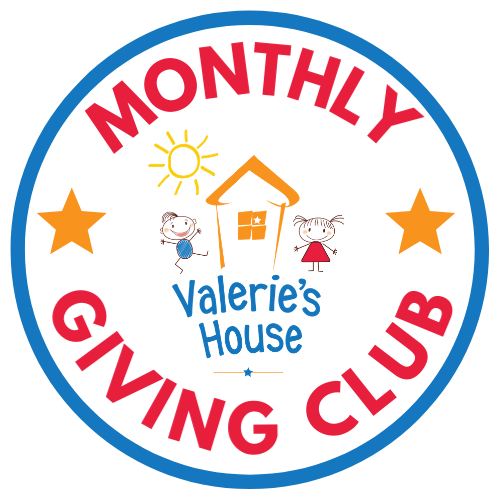Teaching Your Child to Regulate Their Emotions and Feelings
/Tips from Shaun - A Valerie’s House Grief Therapist
Shaun
One of the most difficult things to do with our children who are going through grief is to help them regulate their emotions. You can have the smartest, most amazingly talented child in the world, but if they are going through grief, their intellect is “out the window” because the innate sense of survival, along with their emotions of safety and security, is their number one goal. This is the main reason why their emotional regulation is very difficult to control.
It’s difficult for adults to regulate their emotions and feelings and even more difficult for a child or adolescents. They do not have the same experiences of learning and using language to express their feelings and emotions, and so the emotions are dysregulated.
Intellectually, they may “know” that they are safe, but their body does not feel that way or believe they are safe because the person they love and/or used to care for them is no longer there to hold and love them.
There are seven guidelines that will help them by providing ways for them to see we accept them and care for their needs. Once they feel safe and understand that we care very much for them, they can relax and begin learning to regulate their emotions.
1. The first guideline is the most fun. You are encouraged to do all of these with your child. Asking them or telling them to do these does not help them regulate their emotions. When you do these with your child, you model what you want them to do. Doing these with them also bonds you closer to your child.
2. The second guideline is a loving touch. This is the most important source of dopamine and serotonin release in a person’s brain. It helps the child believe that he/she is safe and lays the foundation of positive emotional regulation. A great example of this is to offer to hold your child’s hand as you talk to them.
3. Calming words is the third guideline. As you use calm words with a calm voice, your own regulated emotions help them calm down.
4. The fourth guideline is to match your calming words with a smile or other gentle facial expressions. A gentle smile and kind eyes are the key. Stern, disappointed, or even neutral facial expressions matched with gentle words will give your children mixed messages and create doubt and feelings of insecurity.
5. The fifth guideline is we want them to feel they are accepted for who they are and what they are feeling at this moment… no matter what. Your children need to be reminded they are loved & respected and that you are willing to meet them where they are:
…. Hurting, but not knowing what is hurting or why.
… Lonely, even though they are in the midst of people around them.
…. Abandoned, even though their caretaker is right there with them.
We know there are many other emotions and feelings. They know the feelings and emotions might not make sense, but they still feel them, and they still experience them.
6. The sixth guideline is to list with your child the activities that help him/her calm down and relax. If music helps them, then choose slow music to start out with. If drawing helps them, draw a feeling they are experiencing. They can also make up a positive story about that feeling. The story should have a hero, the hero’s special power, and a villain. The story can be about how the hero uses his/her superpower to fight the villain and overcome his/her feelings and WINS! If exercise helps, then start out with a slow exercise, They can then increase their speed of exercising and then finish with slow stretching. If dance helps them, dance together throughout the room or even the house!
7. The last guideline, believe it or not, is food. Foods can either encourage the calming and emotional healing process or complicate the process: Too much sugar and/or too many simple carbohydrates without protein can give a child a lot of energy, followed by a sugar crash. This will almost guarantee an emotional “crash” and difficulties in regulating emotions. There is quite a lot of literature on various food color dyes and how they contribute to a child’s hyperactivity and complicate their ability to process their emotions and feelings clearly.
These activities are wonderful at helping you to show your child and teach your child how to regulate emotions and feelings better. As you take care of yourself and do these with your child, you will show them how important it is to do this to heal through the grief, and heal together.


















